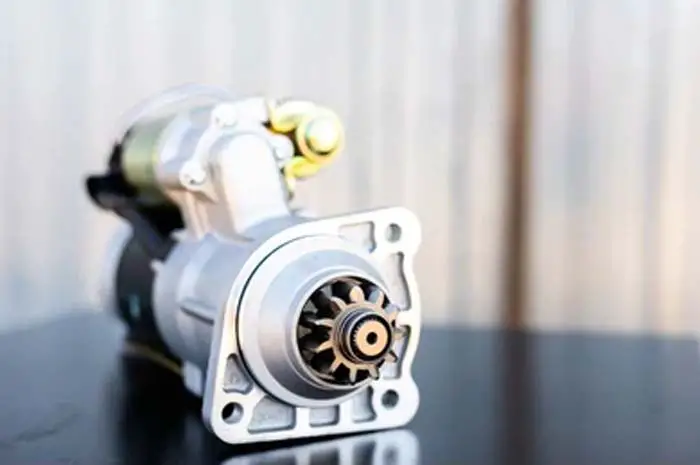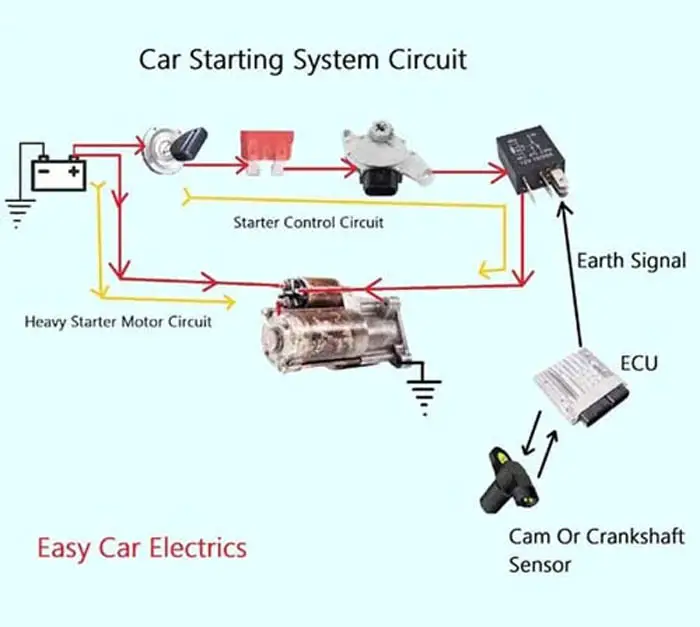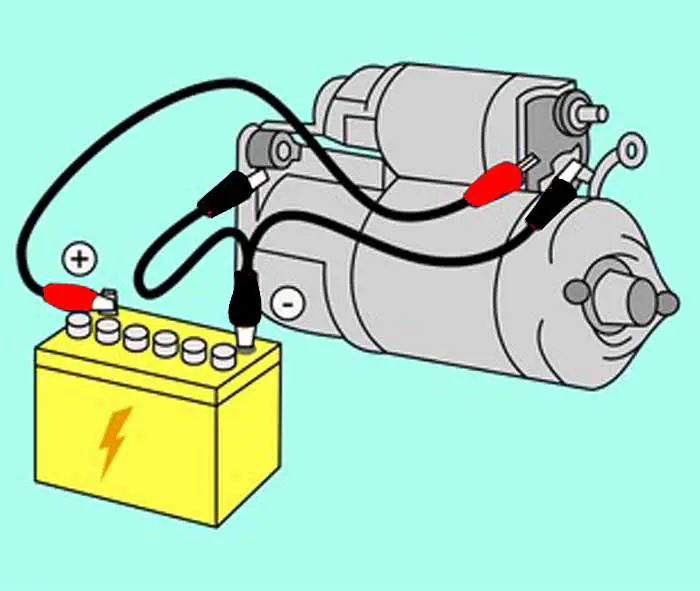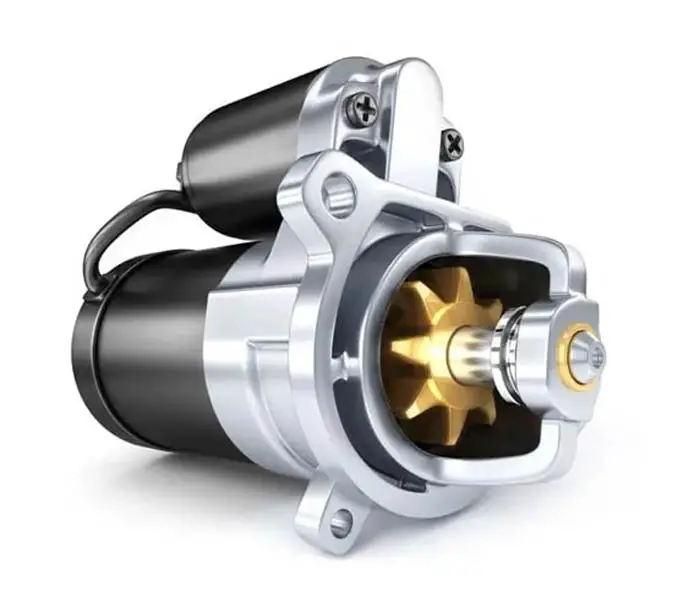
Do you know cranking the starter motor continuously for a long time without taking a break, is extremely dangerous to the health of the starter?
It is because it is designed to operate only for a few seconds. Since an internal combustion engine can not start itself, it needs an external force to get it up to minimal RPM to run smoothly without help. Definitely, a starter does this job.
A starter motor is an electrical device, used to crank the engine. The Starter motor is one of the most crucial parts that make the starting system.
If you are new to the starter and want to know everything about it. This awesome guide is for you. In this amazing and powerful guide, you will learn everything you need to know about it.
On this page, you will find useful, effective, and practical information and tips about starters. Here you will find eleven parts of a starter motor, functions, working operations, types, and many more things explained in easily understandable language backed by science.
Starter Motor Definition:
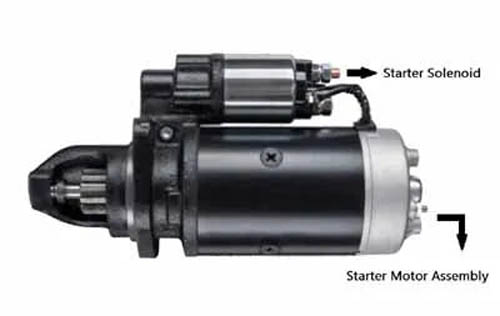
The vehicle starter motor is the primary starter system component that cranks the engine; we people mistakenly think that the starter motor is the collection of the solenoid and motor body, but that is not true.
The solenoid is not a starter motor; it is part of the starter motor assembly that acts as a bigger starter relay. You can say it is the “Accessory” placed on top of the starter motor body. The starter consists of a starter motor and solenoid. The real starter motor unit is the main bigger cylindrical component below the solenoid, while the solenoid is situated on top of the motor starter.
This was a little misconception some people get, I wanted to clear. Now here is the definition.
The vehicle’s electric starter motor (also called the starter, self-starter, or cranking motor) is a device that converts electrical energy into mechanical (Rotational) energy in the internal combustion engine to crank the engine. It is mounted on the back of the engine casing or in the front of the transmission housing and was invented in 1911 by Charles F. Kettering. The starter motor or cranking motor is a powerful electric motor; it consumes a lot of currents to start the engine.
All Internal Combustion engines need some external help to get moving. You have to turn the engine for the first two strokes intake and compression strokes until the power stroke reaches and that is because the third stroke produces the power.
Once the power is generated, then the engine is able to run the four-stroke cycle itself through inertia. The ignition switch sends the power to the starter motor which cranks the engine until it runs without help. And so, there is no need for a starting motor when the engine has started. It is only required for the first cycle to start.
This is an Info
The starter is used for the first two strokes intake and compression strokes until the power stroke reaches, then the engine is able to run the four-stroke cycles itself through inertia.
Related Post: Types Of Starter Motor
Function Of Starter Motor
The function of the starter motor is to start the engine. It does this by creating the pinion gear rotation, which turns the engine over and gets it cranked. It is a key component to getting your engine cranked. Without it, your car wouldn’t be able to start.
Construction Of Starter Motor Assembly
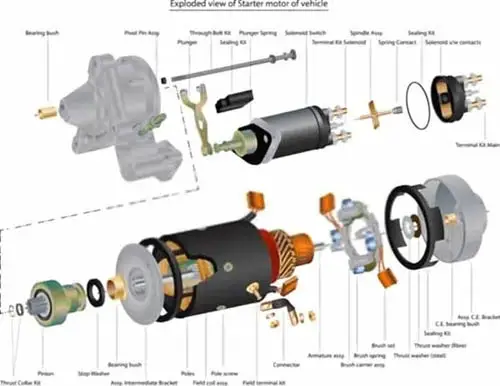
A Starter motor is an electric motor that turns over the engine. Several parts are used in the construction of the motor. The motor assembly is the collection of many parts together all parts create a powerful motor. It consists of the armature, commutator, brushes, pinion gear, overrunning clutch, field coil or permanent magnet, and planetary gear set.
An armature is placed inside the permanent magnet or field coils to produce electromagnetic force. At one end of the armature shaft the pinion gear, overrunning clutch, and planetary gear set are installed. At the other end of the armature shaft, the commutator is installed which connects with the brush to create an electrical path for the armature.
Related Post: Starter Solenoid Wiring Diagram: 3 Pole Starter Diagram
How Starter Motor Works
The starter motor working principle is based upon converting electrical energy into mechanical energy to make the engine run. It works on the principle of electromagnetism. When the ignition switch is activated, the current flows from the ignition switch to the starter motor, supplying current to the motor. It passes on the path of brushes to the commutator and then to the armature windings.
This armature winding creates a strong electromagnetic field that interacts with the magnetic field of a permanent magnet or field coil and causes the rotation of the armature shaft. While the armature rotation is being produced, at the same time solenoid pushes the starter gear forward to mesh with the flywheel. And the armature rotation is transferred to the flywheel ring gear via the pinion gear.
A planetary gear set increases the torque of the pinion gear. However, when the engine runs on its own power and its speed increases the speed of the pinion gear, the overrunning clutch disengages by slipping the pinion gear and protects the starter from overspeeding. Lastly, when the engine starts, the driver releases the key, and the current is cut off from the starter.
Related Post: How To Wire A Starter Solenoid In 5 Min (With Diagram)
Starter Solenoid:
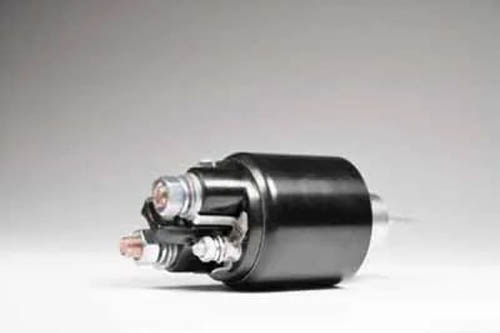
A solenoid is an electromagnetic switch that connects and disconnects the battery to the starter motor. It is a small cylinder bolted on top of the motor assembly. The solenoid gear pushes the pinion gear forward to engage with the engine flywheel.
A solenoid acts as a huge switch, used to turn ON and Off the starter assembly. The solenoid acts as a bigger switch to make the connection and connects the starter motor car battery. It uses a small amount of current to turn on a bigger current. It acts as a huge bigger relay that controls a heavy-duty circuit. The function of the solenoid is to quickly turn ON and OFF the motor to protect it from damage.
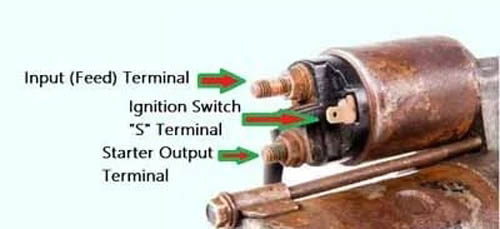
The solenoid has three terminals at the back of the solenoid cap. One terminal is for the ignition switch to turn ON-OFF the solenoid, and two terminals are for the input and output battery positive power source.
Related Post: The 6 Complete & Awesome Starter Solenoid Parts & Functions
Starter Motor Parts And Functions + Working
In this section, we will discuss the 11 complete and detailed parts of starter motor, its functions, and its working.
- Armature:
- Armature Windings
- Armature iron core:
- Armature shaft:
- Commutator:
- Brush:
- Fields coil:
- Permanent Magnet
- Pinion Gear:
- Overrunning clutch:
- Planetary Gear
1. Armature:
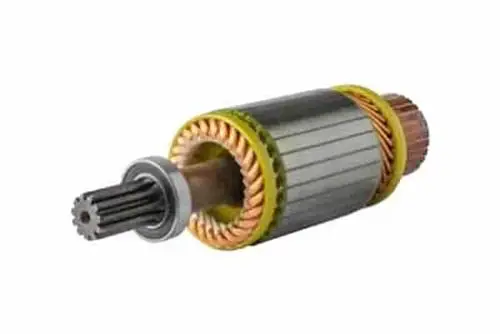
It is also called a coil rotor. An armature is the most important starter motor component. It is the heart of the motor.
An armature is a collective name. It is the collection of the winding, motor shaft, iron core, and commutator, that altogether make the armature. A motor armature is a power-producing electromagnet used to convert electrical energy into mechanical energy.
It is the central rotating part of a motor. The loops of windings are wrapped around a laminated iron core. This iron core increases the intensity of magnetism when voltage is used as an input in the armature. It was introduced in the 19th century, and its meaning is “keeper of the magnet”.
Function Of Armature:
The function of the starter motor armature is to create electromagnetism in the motor. The strength of electromagnetism is directly proportional to the magnitude (the amount) of the current flowing in the armature winding and the turns of the loop in the winding.
How The Armature Works:
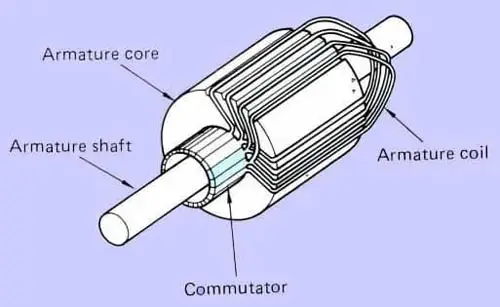
When the ignition switch is turned to the start position, the current energizes the solenoid, which allows the high electric current to flow to the brushes in a permanent magnet starter motor (PMSM), Or in a field coil starter motor (FCSM), the current flows from the solenoid to field coil to brushes. The brushes are attached to the commutator.
The current flows from the commutator to armature windings, where it creates electromagnetism and then returns to the ground via commutator segments through the brush’s negative side.
This electromagnetic field produced in the armature winding reacts with the magnetic field of the permanent magnet or field coil and forces the armature to rotate, thus, the starter motor spins. This spinning is then transferred to the flywheel by pinion gear, and as a result, the engine gets started.
2. Armature Windings
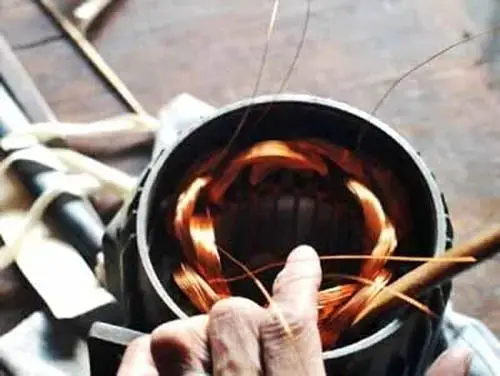
The armature winding is a group of wire turns (called a coil), that is wounded across the iron core. A coil is a circular turn of electrical wire designed to produce an electromagnetic field.
Construction Of The Winding
The armature winding is composed of several coils. It is designed to wound in a specific pattern and soldered to the commutator segments. The winding is made up of copper and is insulated to avoid contact with an iron core.
Function Of The Winding:
The function of winding is to create an electromagnetic field in the motor that then becomes the source of armature rotation.
3. Armature Iron Core:
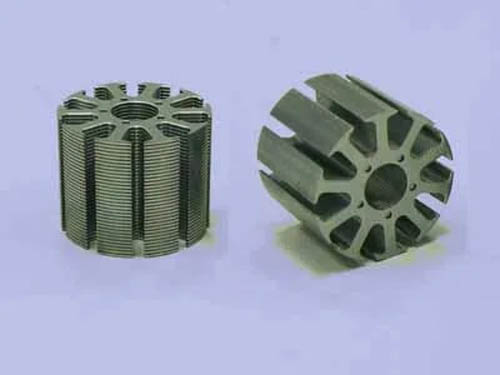
An iron core is made up of metal plates. It consists of several thin metal plates combined to have a single piece. The thickness of each metal plate is almost 0.5mm.
Function Of The Armature Iron Core:
The function of the iron core is to increase the intensity of electromagnetism, provide support, and also hold the windings.
4. Armature Shaft:
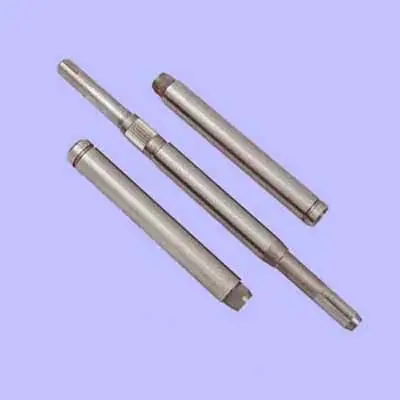
It is a rod fitted in the center of the armature core mounted between two bearings. With the help of bearings, the shaft rotates freely without any resistance.
Function Of Armature Shaft:
The function of the armature shaft is to transfer mechanical energy and to provide support to the armature assembly as well as the commutator.
5. Commutator:
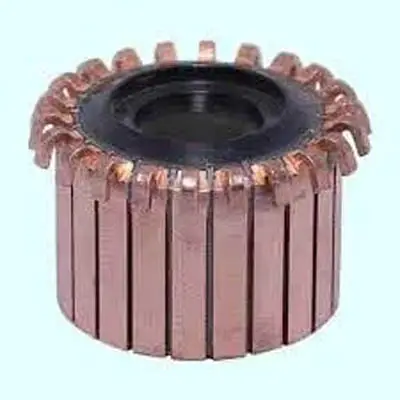
The commutator is a metal contact that provides a path for the electrical current to pass to the armature winding loops. It is made up of hard-drawn copper wires that give great hardness and durability to the commutator.
Apart from this, the commutator is created in segments and is soldered to the coil loops of the armature winding. It is placed around the part of the circumference of the rotating shaft of the armature.
Moreover, the segments are separated from each other by the Mica insulator (Mica is a mineral raw material with insulating & thermal properties). The commutator is used to connect the armature to the stationary circuit via brushes. It is specifically used in the motor to have a unidirectional torque and armature.
Function Of The Commutator:
The function of the commutator in a self-starter motor is to reverse the direction of the current flow in the armature winding to have uni-direction torque on the armature. You may be wondering at this point how a commutator reverses the direction of current flow in the armature winding. So, let me break this point down in the next section.
How A Commutator Works:
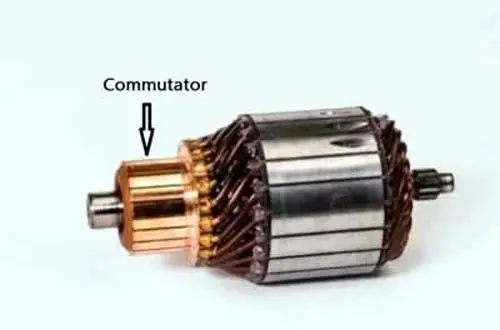
The working principle of the commutator is based on reversing the direction of the current flow in an armature winding, to have the same direction rotation.
As when the current is applied to the armature through brushes, an electromagnetic field is produced, this exerts a rotational force on the armature according to the polarity.
So, as the armature shaft turns 180⁰ (one-half rotation), the commutator segments also rotate, which causes the current to pass to the individual commutator segments in a sequence.
This enables the commutator segments to connect to the brushes in such a way that the current flowing through the same coil of winding will flow in the reverse of the first direction.
This causes the armature to spin in the same direction. This constant reversal of current flow in the armature winding enables a unidirectional rotation. For this reason, you can also say, the role of the commutator, is like a reverse switch. This was the working operation of a single coil of armature winding. To achieve smooth motion and torque, the number of coils must be increased.
This is an Info
The commutator segments connect to the brushes in such a way that the current flowing through the same coil of winding will flow in the reverse of the first direction.
6. Brush:
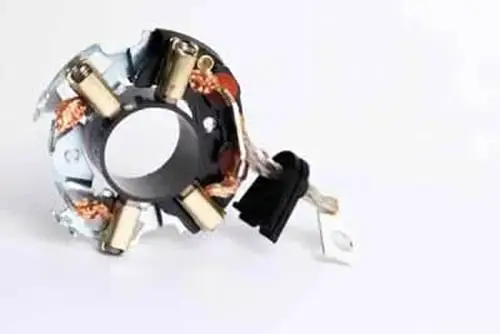
This is an important component of the motor which transmits the heavy electrical current from the starter solenoid output terminal to the spinning armature. The brush is an electrical contact that carries current from the battery to the armature.
Now you will ask why a brush is used in the motor. Let me break this down for you.
Suppose you directly connect the battery power source with the armature. With the rotation of the armature, the contact will break, and the current flow will be disconnected. So, the battery power should be given in such a way that it does not break with the rotation of the armature.
Therefore, the concept of the brush came into existence. A brush provides current without breaking the connections with the rotation of the armature. Thus, you can also make the definition of the vehicle motor brush in this way.
A motor brush is an electrically conductive sliding contact that makes the connection between the stationary wire and a moving part (Rotating armature).
This is an Info
The brush provides current without breaking the connections with the rotation of the armature.
Function Of The Brush:
The function of the brush is to provide the electrical current from the stationary wire to the spinning armature.
Construction Of The Brushes:
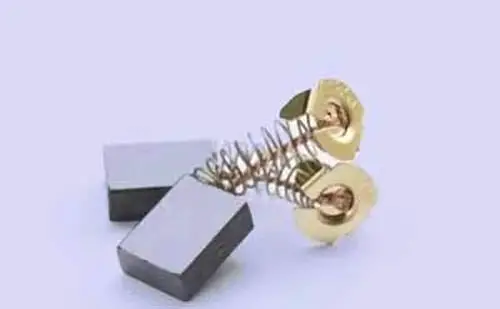
Vehicle starting motor brushes are made up of carbon (In the past, copper was used to add carbon, or sometimes pure copper was used as a brush). The area where brushes make the connection with the armature is known as a commutator.
It is the brush that rides on the commutator. The commutator creates a path for electrical current to pass from the brush to the armature.
There are commonly four brushes used in a self-starter motor. Two brushes are positive, and two are negative which are connected to the ground.
One end of the brush is connected to the starter solenoid output terminal in the permanent magnet starter motor or the field coil in the field coil starter motor. And the second end of the brush is connected to the commutator.
Furthermore, a spring is used inside the holder for good contact. The spring pressurizes and pushes the brush into the commutator to have firm contact.
In fact, while the commutator and brushes wear down, the springs steadily push the brushes forward toward the commutator. Also, keep in mind that an armature is more costly than carbon brushes, and it is easier to replace the brushes in case of wear down.
That is why carbon brushes are made up of soft material to wear out faster with usage to protect the commutator from damage. Its surface is designed to be neither too smooth nor too rough to keep the commutator from wearing out. You might hear the older brushes carried more damage to the commutator.
Because the older brushes were usually made from copper which is by nature very hard and causes scratches and deep grooves to the smooths commutator. The modern self-starter motor uses carbon brushes however, sometimes little copper is added to improve the conductivity, which wears more slowly and causes less wear to the commutator.
This is an Info
The brushes are placed in the brush holder with proper clearance to avoid either brush getting stuck or rattling into the holder.
7. Fields Coils:
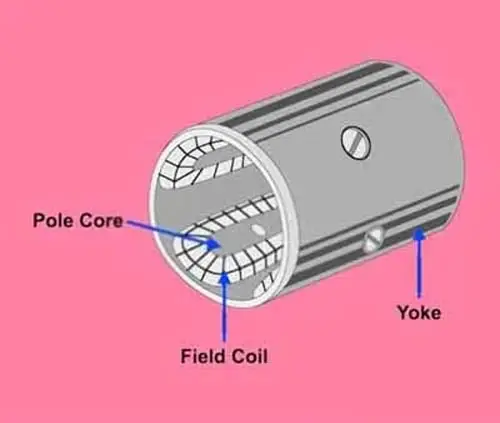
The field coil is a thick copper wire wrapped around the iron core. It is held in a housing with screws called Yoke. A yoke holds the field coil.
A pole core is an iron core through which loops of winding are attached. The pole core intensifies the strength of the magnetic field. The coil in the field coil is connected at opposite polarity to provide north and south poles when the current runs through it.
Function Of The Field Coil:
The purpose of the field coil is to generate electromagnetism that forces the armature to rotate. According to the operational principle, the self-starter motor requires a magnetic field around the armature to create a rotation; the field coil does this job. It generates magnetism when the current passes through it from the motor terminal.
This is an Info
The Field coil is not a permanent magnet. It is an electromagnet means it only becomes a magnet when electricity flows through it.
How The Field Coil Works:
There are generally four field coils in a self-starter motor. It is wound in series with the current flowing first from the solenoid output terminal to the field coils’ windings, then to the brushes, to the commutator, and finally to the armature windings. This type of series-wound starter motor allows the creation of maximum torque.
8. Permanent Magnet:
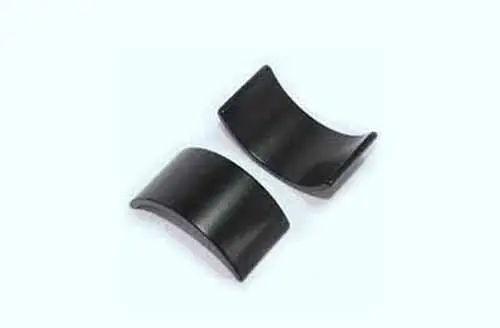
Permanent magnets are rectangular shape magnets used to produce a magnetic field in the self-starter motor. It was first introduced in the late 1980s on vehicles, made up of an alloy of boron, neodymium, and iron. It is very brittle and can break easily while repairing the motor. So, take care.
Function Of The Permanent Magnet:
The function of the permanent magnet is to produce the magnetic field, which is required to make the armature spin in the self-starter motor.
Construction And Working Of The Permanent Magnet:
The self-starter motor usually has six curved permanent magnets around the armature. It is placed in opposite pairs to create north and south poles inside the starter motor housing case around the armature.
Moreover, the permanent magnets are placed in such a way that the N-pole and the S-pole of each magnet are alternately faced toward the armature. When the current flows to the armature, it produces an electromagnetic field that reacts with the magnetic field of the permanent magnet which exerts a force on the armature and causes rotation.
The permanent magnet has an edge over the field coils that it provides a constant magnetic field, due to which the speed and torque characteristics are expected to be constant. Conversely, the field coil’s electromagnetic field depends upon battery condition.
This is an Info
The permanent magnets are placed in such a way that the N-pole and the S-pole of each magnet are alternately faced toward the armature.
Comparison Between The Permanent Magnet And Field Coils:
According to the working principle of starter motor, there should be a magnetic field around the armature to produce a torque on the armature.
So, a self-starter motor uses one of these two types of magnets.
- Permanent Magnets
- Field Coil
It may be a permanent magnet or a field coil (Electromagnet) however, the rest of the operational principles are similar.
Here are the differences between the permanent magnet and the field coil.
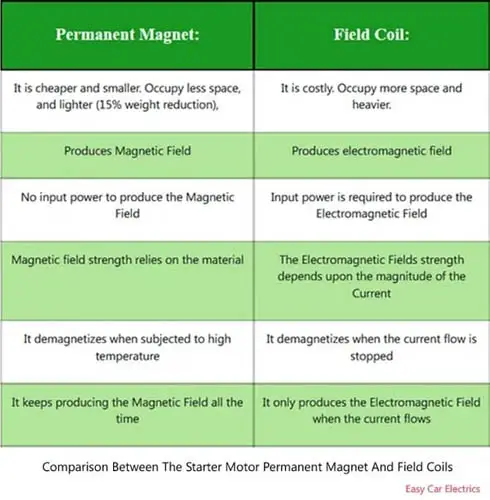
9. Pinion Gear:
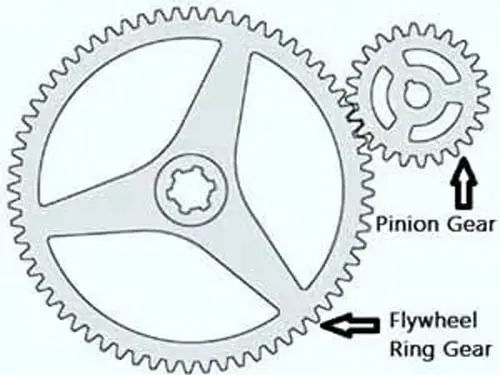
The general definition of the pinion gear is a smaller gear of two meshed gears. Generally, the vehicle’s starter motor gear is smaller, and the flywheel ring gear is bigger. That’s why self-starter motor gear is called Pinion Gear.
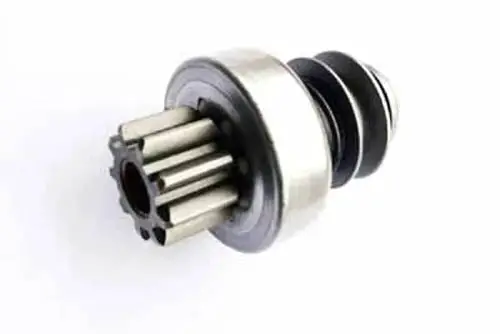
The pinion gear is the small round gear, located at the front end of the armature shaft followed by an overrunning clutch. It is used to transfer the motor torque to the flywheel to crank the engine. The gear ratio between the pinion gear and the flywheel is usually kept at 20:1. This means with every rotation of the flywheel, the pinion gear rotates 20 times.
The reason behind keeping this high transmission gear ratio is that it makes it the pinion gear possible to overcome cranking resistance by using a small but high-speed torque gear. The pinion gear teeth are involute in shape, which enables the pinion gear to easily mesh with the flywheel.
Function Of The Pinion Gear:
The purpose of the pinion gear is to transfer the motor torque to the engine flywheel for starting an internal combustion engine.
How Pinion Gear Works:
When the ignition switch is turned to the “Start” position, the solenoid activates, which attracts the plunger and moves the pinion gear forward by lever-fork to mesh with Flywheel. As a result, the self-starter motor torque is shifted to the flywheel by the pinion gear.
As soon as the car starts, the driver releases the key from the start position, and the solenoid deactivates. This allows the return spring to push back the plunger to its rest position and also, pulls the pinion gear out of the flywheel by lever fork.
10. The Overrunning Clutch:
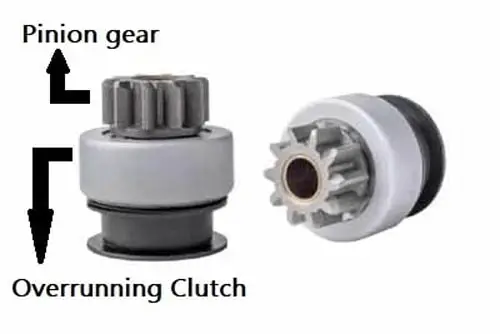
In general, a clutch means connecting and disconnecting two rotating shafts. The self-starter motor overrunning clutch connects and disconnects the pinion gear and flywheel. An Overrunning Clutch disconnects the pinion gear mechanically from the flywheel and allows the pinion gear to turn freely when the flywheel spins faster.
It is basically a one-way clutch that allows the force in one way from the pinion gear to the flywheel. And freely rotates in the reverse direction by slipping the pinion gear. It is located on the armature shaft after the pinion gear.
Function Of The Overrunning Clutch:
The function of the overrunning clutch is to disengage the flywheel and pinion gear to prevent the starter from being damaged. It de-meshes the armature from being spun faster by the engine flywheel.
When the engine has started, and the flywheel spins faster than the self-starter motor, the flywheel forces the motor to run faster with such a high speed that can cause great heat to the motor and also, can damage and melt the armature.
As a result, the self-starter motor burns and will stop working. The armature must be de-meshed before getting heated to protect the self-starter motor. So, in other words, you can say, the overrunning clutch prevents the armature from over speeding. It prevents the pinion gear from being accelerated to an excessive rotation.
Construction And Working Of The Overrunning Clutch
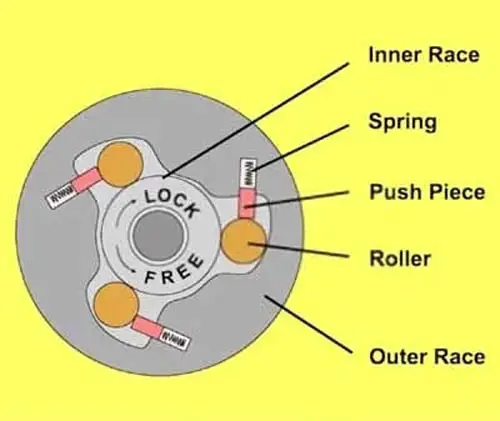
An overrunning clutch consists of a set of rollers with cylindrical plates called the inner and outer race. When the starter motor is powered, the pinion gear meshes with the flywheel ring gear.
At this time the outer race of the overrunning clutch rotates, which enables the rollers to jam the inner race. It makes both races spin together as a unit, which transfers the self-starter motor torque to the engine flywheel.
As soon as the engine has started and the flywheel speed increases, it forces the pinion gear to accelerate faster than the starter.
Keep in mind, that this fast rotation of the pinion gear driven by the flywheel ring gear causes the pinion gear to rotate in the opposite direction. This releases the rollers and causes the inner race to turn alone freely with the flywheel. This disengages the armature from the engine flywheel.
As a result, the overrunning clutch prevents the self-starter motor from excessive speed and also from torque transformation.
Related Post: Defective Compressor Clutch
11. Planetary Gear:
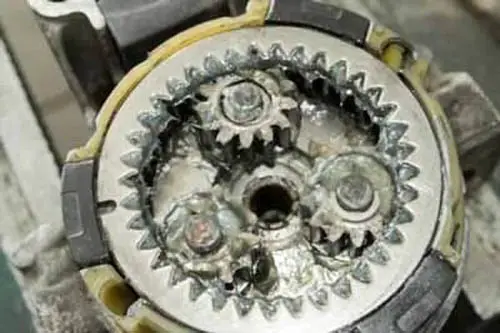
A planetary gear set is a group of gears used for increased torque and reduced speed of the self-starter motor. It is attached to the main shaft of the motor in between the pinion gear and armature. It is called the planetary gear because it has planet gears orbiting around a sun gear.
All self-starter motors do not have the planetary gear set. It is used in gear reduction types starter motors where it fulfills the demand of high torque requirement. One important point you should keep in your mind is that the torque and speed are inversely proportional to each other.
So, when the pinion gear speed is reduced automatically, its torque is increased at the pinion gear. A planetary gear mechanism is specially designed to reduce the pinion gear speed and increase the torque.
A planetary gear reduces the rotational speed of pinion gear to ¼ times. It means with four rotations of the armature, the pinion gear rotates only one time.
Functions Of The Planetary Gear Set:
Planetary gear performs the following functions.
- Increase the torque of the starter
- Decrease the speed of the starter
- Easy engine starting even on cold days
- Less current consumption at starting time
- It lets reduces the size and weight of the starter
Construction And Working Of The Planetary Gear Set:
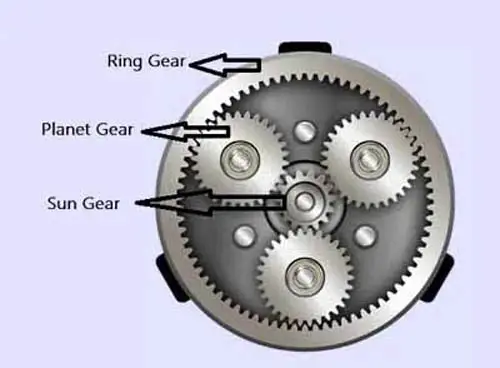
A planetary gear consists of four parts a sun gear, three planet gear, a carrier, and a ring gear. A sun gear is attached to the motor armature and placed in the middle of three planet gears.
The three planet gears are placed within the internal teeth of a fixed ring gear. A carrier is attached to the three planet gear connecting them as a unit going to the pinion gear drive.
Overall, a sun gear is used as an input to the planetary gear, and the planet carrier is used as output power to the motor pinion gear. When the driver turns the key, the solenoid is energized allowing the current to pass to the armature. The armature starts to rotate, which causes the production of electromagnets.
With armature rotation, the sun gear also rotates which forces the planet gears to rotate all around the ring gear, making orbitary motion around the sun gear.
A carrier is used to transfer the planet gear output power to the pinion gear. This mechanism reduces the speed of the self-starter motor and increases the torque.
Related Post: Types Of Starter Motor: Direct Drive & Gear Reduction Starter
Types Of Starter Motor
A starter motor is an electric motor that turns a car’s engine over to start it, powered by the car’s battery. There are different types of starter motors, but the two main starter motor types used in modern vehicles: are direct drive and gear reduction. In a direct drive starter motor, the armature is directly connected to the pinion gear and transfers the armature force directly to the engine flywheel.
On the other hand, a gear reduction self-starter motor has a slower pinion gear speed achieved through a mechanism called a reduction gear, allowing for higher torque with less electrical power consumption. This type of self-starter motor has become more commonly used due to its improved efficiency and smaller size.
Related Post: Types Of Starter Motor
Frequently Asked Questions (FAQs)
What Are The Signs Of A Bad Starter Motor?
Below are the signs of a bad motor starter.
The motor does not turn ON
The starter produces a clicking sound
The motor produces a grinding noise
The engine cranks slowly to start
It turns freely (Freewheeling)
The starter turns Intermittently
It stays ON
It produces smoke
Oil-Soaked Starter
The above are the signs of a defective starter.
If you want to completely know the signs of a faulty starter. I have already explained all these problems and signs above in this powerful article.
Can A Bad Battery Kill A Starter?
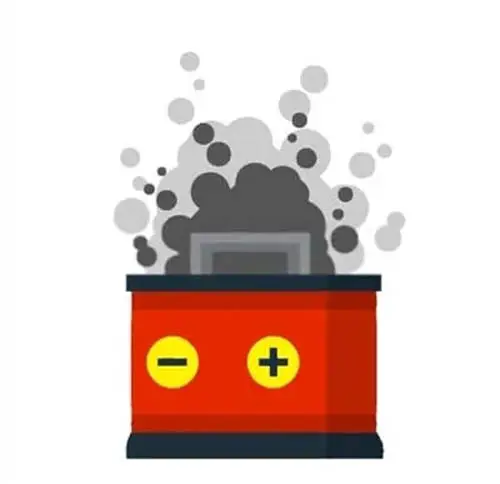
It is a very common question; people often email me that can a bad battery kill a starter. The short answer is No, but I say, listen carefully, I say in only one case, it can kill the starter. Bear with me, I am explaining this point.
Look, the bad battery doesn’t harm the starter when you are attempting to crank the engine. But, in only one case, it can kill the starter if you keep cranking on it for a long time without taking breaks with the car not starting. In this case, holding the key in the start position for a long time can overheat the starter and burn out.
The problem is the amount of time the starter is connected to the battery. A good battery will transfer a lot of power but only for a second or two that it takes to ignite the engine.
But, on the other hand, with a bad battery, you might crank it for 10+ seconds, although less current is delivered to the starter. This length of time causes overheating in which a high amount of current is converted to heat rather than rotational force.
How Does A Weak Battery Kill The Starter?
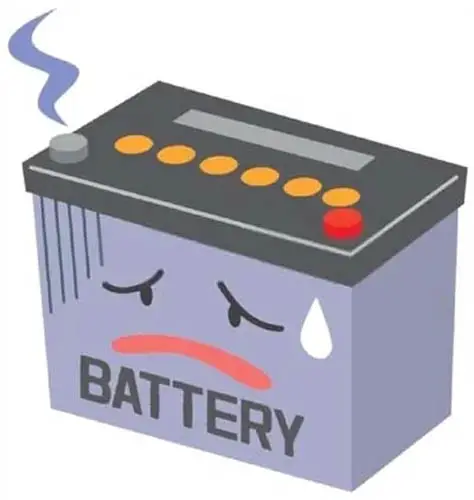
Now here is the important question how does a weak battery kill the starter? As I always say, “Easy Car Electrics” is not an ordinary website; it is a place where you will find logical answers explained in simple words backed by science. So, come to the point.
When the current passes through the starter, the motor armature rotates, with which the commutator also rotates.
But, if the battery is weak and cannot provide enough current to the armature, the armature will rotate slowly and also the commutator segment. As a result, each segment of the commutator will carry less current (due to a Weak Battery) but for more time.
And with more time on each segment, it may get hot. If in case the starter motor engages with the ring gear but does not turn over (due to a weak battery) then all the current will go through one segment which can damage the commutator and can eat the brush. Furthermore, a bad battery can increase the wear while cranking over during a slow start.
Related Post: The Battery
How To Tell If It Is Your Battery Or Starter Not Working?
Here, I am explaining the symptom of a not working starter and battery.
Symptoms Of Bad Starter:
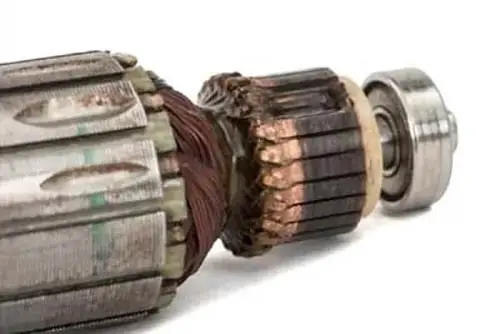
- When you are attempting to crank the engine and the dash lights illuminate fully, but the starter produces a click sound or repeated clicking sound or no sound at all, is a sign of a defective starter.
- The engine does not start even jump-starting.
Symptoms Of Bad Or Dying Battery:
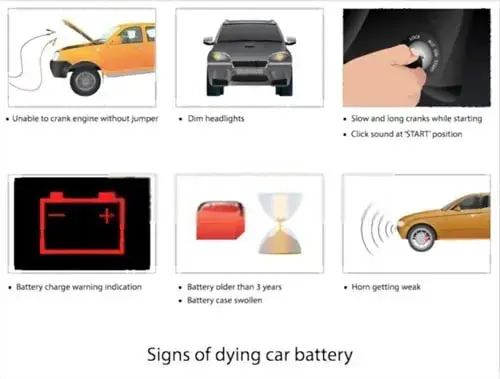
- With a low battery, you turn the key, and the starter produces a clicking sound or no sound at all, but the lights on dashboards go dim or completely turn off as long as you are attempting to crank the engine.
- The engine does not turn on after jump-starting.
- Shaped like a battery in the dashboard indicates an internal problem with the alternator or battery.
- If you experience the starting problem regularly can be a sign of a bad battery.
- If you jumped start your car in the past, and the engine does not turn over at all can be a sign of a bad battery.
- Dim Lights
- Weak Horn
- The battery is older than three years
The Best Way To Diagnose The Bad Battery Or Bad Starter:
The best way to diagnose a bad battery or starter is to jump-start the car. If the car does not start, it means the starter is bad, but if the car starts, and will not start again once you turned it off. It might be the problem of a bad battery.
Why Does The Starter Motor Fail?
As you know that every moving component wears out with time, similar to the starter too. A starter can fail due to several reasons. Below are the five most common causes of failure.
1. A Very Old Starter Motor:
An old motor can cause it to fail because, over time, the starter loses its job, and becomes vulnerable to failure.
2. Corroded Or Weaker Battery:
Corroded terminals or weaker batteries will not deliver full current to the starter. As a result, the starter will not fully engage with the flywheel, this causes a mismatch in the teeth of both gears and will wear out, which is the reason for the starter to fail.
3. Shorted Wiring:
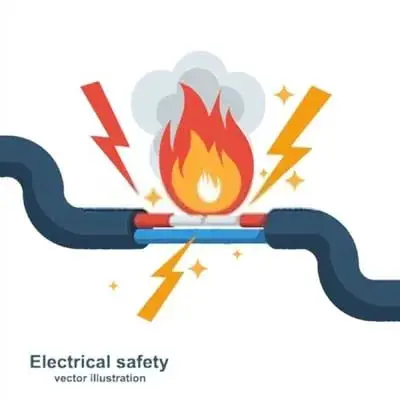
Shorted starter motor winding or starter control circuit will overheat the starter motor and can fail it.
4. Stiffed Bearing
The stiffed bearings of the starter motor can also cause the starter motor to fail.
5. Lose Mounting Bolts
Loose mounting bolts will not let the pinion gear fully mesh with the flywheel. Thus, it wears out the pinion gear teeth, and as a result, the starter can fail.
Can You Jump Start A Car With A Bad Battery?
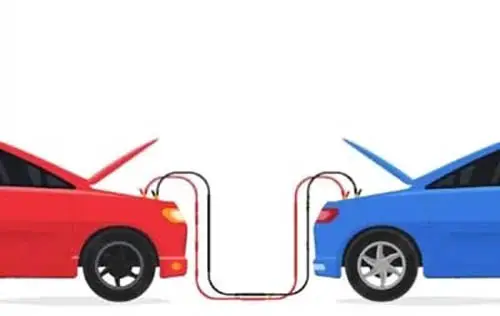
First of all, you should know the definition of a jump start. A jump start is a method of starting the vehicle in which a car is started with a flat battery via jumper cables, connected to another vehicle or some other external power source.
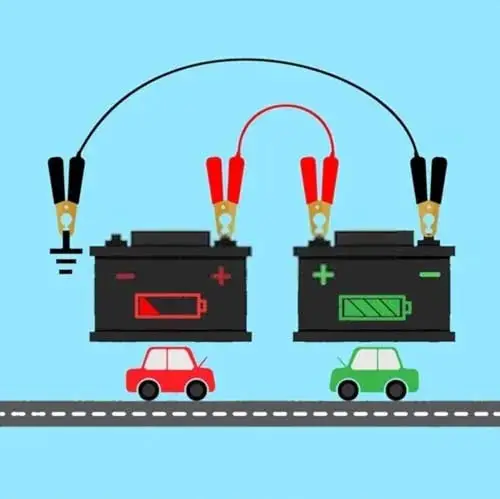
Now come to the answer. Jump-starting a car with a bad starter will not help ignite the engine. Jump starting only boosts the battery power. Sometimes, a faulty starter draws a lot of current from the battery although, the battery is in good condition.
But, the faulty starter will take a high amount of current to turn over the engine. In that case, jump-starting will help boost the battery power to turn over the engine.
Can You Hit A Starter To Make It Work?

If you have checked all the connections are perfect and the battery is ok, but still, you have a problem with the starter. Then yes, hitting the starter with a light hammer or a metal object can help activate the starter.
Sometimes the solenoid is stuck, or worn-out brushes have trouble contacting commutator segments, so hitting the starter lightly with a hammer while attempting to start the engine is the last effort, and it can work. And remember, this fix is temporary until the starter is replaced or fixed.
Can A Starter Motor Run Continuously?
No, the self-starter motors are made to only run for a short period of time. The starter motor is designed to only operate for a few seconds, perhaps up to one minute.
Running a starter motor for a long duration can overheat the starter and make it burn out. This is the reason, a starter motor does not have a cooling fan.
Sign Up

